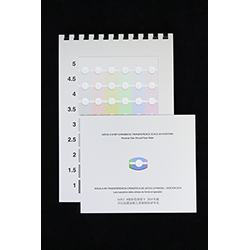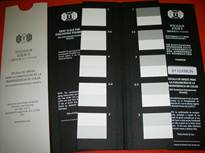AATCC 8 Colorfastness to Crocking (wet & dry)
Purpose of Test
The colorfastness to crocking test method is designed to determine how much color is transferred from a colored textile to other surfaces.
This test method was designed for textiles made from various fibers and with various coloring types:
- Yarn
- Other Fabrics
- Dyed
- Printed
- Other Coloring Techniques
AATCC does not recommend this test for:
- Carpets, or
- Very Small Prints
Terminology Defined
Colorfastness – Colorfastness is a fabric’s ability to retain color in various conditions.
Crocking – Crocking refers to the rubbing off of color from a fabric when subjected to abrasion.
Chromatic Transference Scale – The Chromatic Transference Scale is used to visually evaluate color transfer or staining during testing. The scale has multiple hues that allow a tester to match a hue from a color transfer test to a numerical score.

Gray Scale for Staining – The Gray Scale for Staining is used in colorfastness tests for evaluating staining on undyed textiles. The scale has shades of gray correlated with numbers that allow a tester to match shades with a numerical score.

Test Method
Materials Used for Test
White test cloth squares
- Dry
- Wet with water
Testing Procedure
Timing of Test – the colorfastness to crocking test may be performed before or after any of the following:
- Washing
- Drycleaning
- Shrinkage
- Ironing
- Finishing
- Any other relevant cleaning or finishing treatments
Test Procedure (Summary)
Part 1: Rub Test – The textile being tested is rubbed with a white crock test cloth under controlled conditions.
Part 2: Assessment & Grading – Color transferred to the white test cloth is evaluated by comparing it with one of the following options:
- The Gray Scale for Staining, or
- The Chromatic Transference Scale
A grade is assigned and evaluated against an acceptable quality limit.